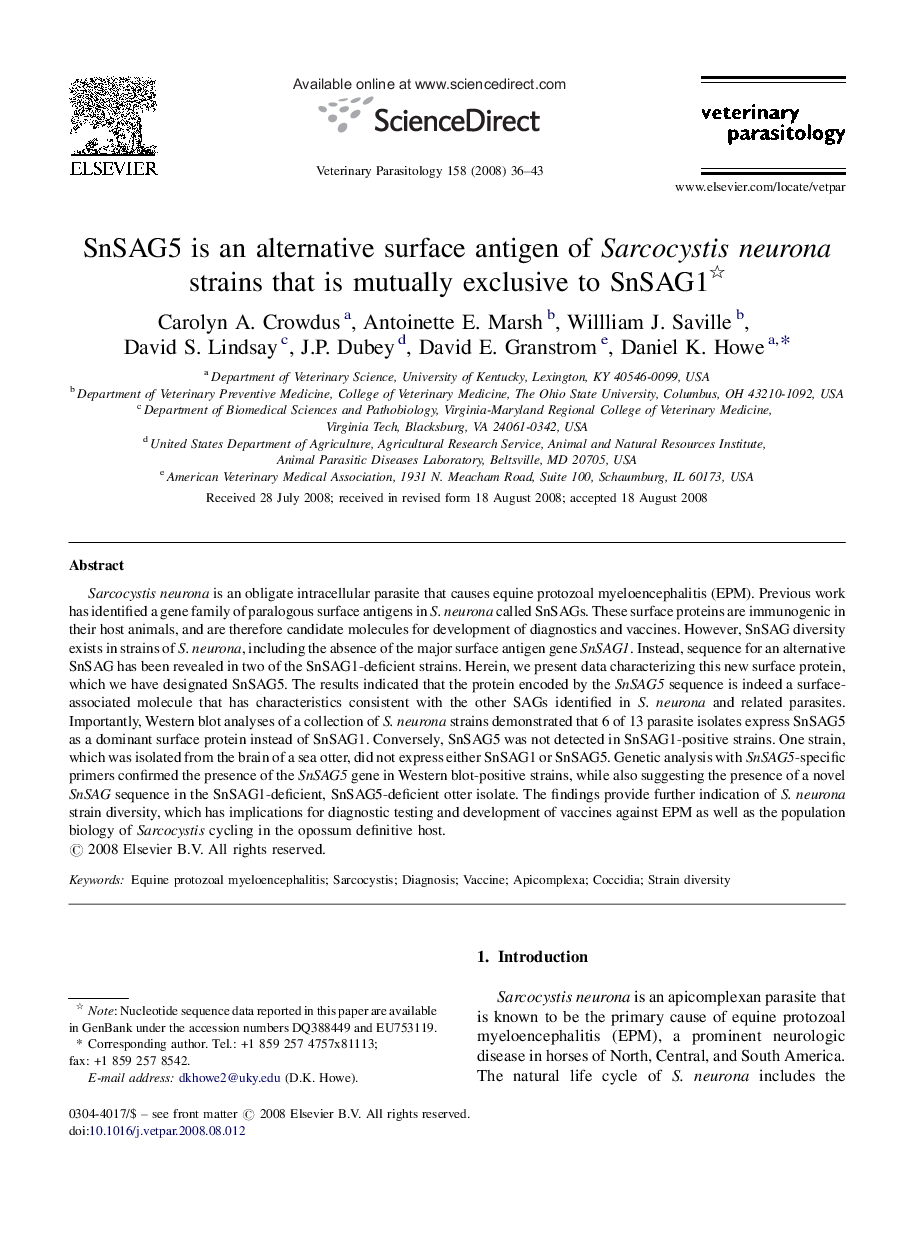| Article ID | Journal | Published Year | Pages | File Type |
|---|---|---|---|---|
| 2471276 | Veterinary Parasitology | 2008 | 8 Pages |
Sarcocystis neurona is an obligate intracellular parasite that causes equine protozoal myeloencephalitis (EPM). Previous work has identified a gene family of paralogous surface antigens in S. neurona called SnSAGs. These surface proteins are immunogenic in their host animals, and are therefore candidate molecules for development of diagnostics and vaccines. However, SnSAG diversity exists in strains of S. neurona, including the absence of the major surface antigen gene SnSAG1. Instead, sequence for an alternative SnSAG has been revealed in two of the SnSAG1-deficient strains. Herein, we present data characterizing this new surface protein, which we have designated SnSAG5. The results indicated that the protein encoded by the SnSAG5 sequence is indeed a surface-associated molecule that has characteristics consistent with the other SAGs identified in S. neurona and related parasites. Importantly, Western blot analyses of a collection of S. neurona strains demonstrated that 6 of 13 parasite isolates express SnSAG5 as a dominant surface protein instead of SnSAG1. Conversely, SnSAG5 was not detected in SnSAG1-positive strains. One strain, which was isolated from the brain of a sea otter, did not express either SnSAG1 or SnSAG5. Genetic analysis with SnSAG5-specific primers confirmed the presence of the SnSAG5 gene in Western blot-positive strains, while also suggesting the presence of a novel SnSAG sequence in the SnSAG1-deficient, SnSAG5-deficient otter isolate. The findings provide further indication of S. neurona strain diversity, which has implications for diagnostic testing and development of vaccines against EPM as well as the population biology of Sarcocystis cycling in the opossum definitive host.
